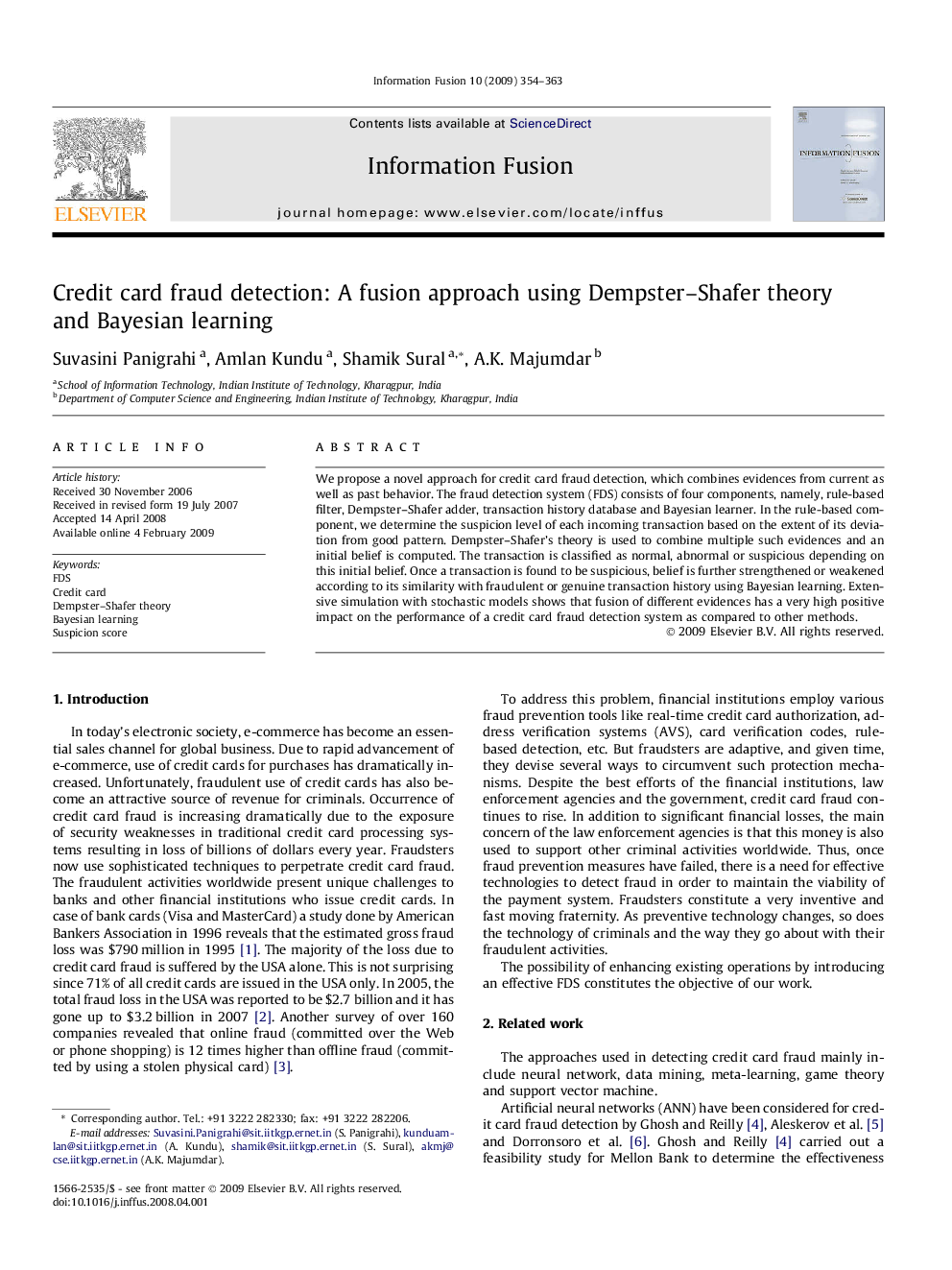| Article ID | Journal | Published Year | Pages | File Type |
|---|---|---|---|---|
| 528441 | Information Fusion | 2009 | 10 Pages |
We propose a novel approach for credit card fraud detection, which combines evidences from current as well as past behavior. The fraud detection system (FDS) consists of four components, namely, rule-based filter, Dempster–Shafer adder, transaction history database and Bayesian learner. In the rule-based component, we determine the suspicion level of each incoming transaction based on the extent of its deviation from good pattern. Dempster–Shafer’s theory is used to combine multiple such evidences and an initial belief is computed. The transaction is classified as normal, abnormal or suspicious depending on this initial belief. Once a transaction is found to be suspicious, belief is further strengthened or weakened according to its similarity with fraudulent or genuine transaction history using Bayesian learning. Extensive simulation with stochastic models shows that fusion of different evidences has a very high positive impact on the performance of a credit card fraud detection system as compared to other methods.
